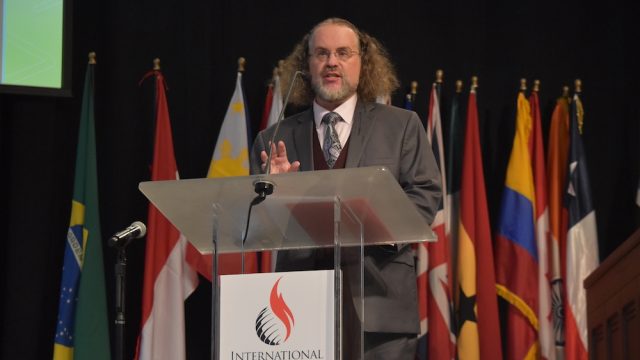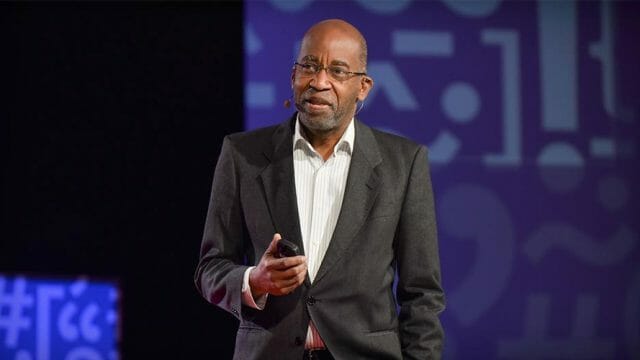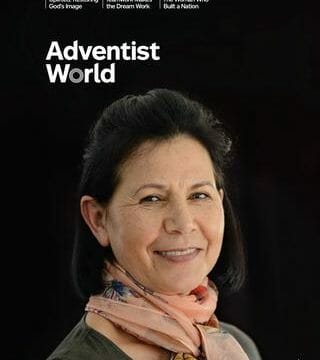Why did God raise a prophet to guide the remnant church?

I often interact with ministers of different denominations during the Argentine Bible Society meetings. On one occasion one of them showed interest in the present state of the Seventh-day Adventist Church. He was acquainted with our educational and health institutions and expressed his admiration for the way our church was growing in South America. Near the end of our conversation he casually commented, “I only regret that you have Ellen White as a prophet.” Indeed, this is a reservation often raised by our evangelical friends.
What exactly is the legacy that Ellen White left for the Seventh-day Adventist Church? And what is the current relevance of her writings for our church? We will attempt to answer here in a way that can serve as a starting point to reflect on these issues as a church.
Her legacy
Denying Ellen White’s legacy for Seventh-day Adventists would be like questioning the importance of Luther for Lutherans, or that of John and Charles Wesley for Methodists. Indeed, her significance exceeds the fact of her having cofounded the movement that became the Adventist Church.¹ Her writings laid the philosophical and theological bases for the establishment of the very educational and health institutions that have dazzled the pastors of other churches. Without the vision, leadership, and personal sacrifice of Ellen White (in addition to the efforts of James White and Joseph Bates), “there would be no Seventh-day Adventist Church today.”² What a paradox that the pastor I met praised those institutions while criticizing the person who laid their foundations!
Ellen White was not only a resolute visionary. She also considered herself as “God’s messenger,”³ entailing that her call and mission played a key role in the emergence and development of the denomination. This statement was not automatically accepted, however. Her contemporaries, and every new generation of Adventist believers since, have assessed her writings and ministry by applying scriptural tests in accepting a prophet.⁴ This acceptance is articulated in number 18 of the Adventist Church’s fundamental beliefs.⁵
Ellen White’s writings and teachings encompass an array of current issues that could be articulated as evidence of their relevance.⁶ To mention an example: her advice on physical, mental, and spiritual health—aligned with Jesus’ three- fold ministry of healing, teaching, and preaching—has made members in the Adventist movement one of the longest-living and most healthy “peoples” on earth.⁷
Her greatest contribution
Translating Ellen White’s work from English into other languages takes attention to detail. Her own words are so intertwined with countless biblical paraphrases and passages she used to support her writings that it is crucial to differentiate her wording from biblical texts, so as to translate only the former, and to transcribe the latter from a Bible version of the target language. This fact highlights the importance Ellen White attached to the Bible as the basis of her messages.
She was aware that her message consisted of applying the biblical message to God’s people at the end of time. Above all, she was clear that her testimonies were “a lesser light,” destined to lead the people to the “greater light” of the Scriptures.⁸ She assumed that her messages were subject to the canonical authority of the Scriptures, so she invited her listeners and readers to study the Bible and to put her message into practice⁹. Speaking to the assembly during her last General Conference session in 1909, she held up her Bible before the delegates and said, “Brethren and sisters, I commend unto you this Book.”¹⁰
The best way that we twenty-first-century Seventh-day Adventists can honor Ellen White’s legacy is to continue to be known as “the people of the Book,” a people who love Jesus and exalt the Bible as the standard of faith and practice.
Suggestions for Prayer
- Pray to God for understanding concerning His latter-day prophet, Ellen White, and how the Spirit wishes to influence your life through her words.
- Ask the Lord for help in dedicating yourself anew to studying His Word daily and applying it practically every moment.
- Praise God for the extensive testimony He has supplied for our spiritual edification to face the challenges of the end-times.
¹ Ellen White cofounded (together with Joseph Bates and James White) a denomination in 1863, with around 3,500 members, which now has grown to a global church of nearly 21 million baptized members.
George R. Knight, Meeting Ellen White: A Fresh Look at Her Life, Pub. Assn., 1996), p. 59.
² Writings, and Major Themes (Hagerstown, Md.: Review and Herald
³ She declared, “For half a century I have been the Lord’s messenger, and as long as my life shall last I shall continue to bear the messages that God gives me for His people” (Selected Messages [Washington, D.C.: Review and Herald Pub. Assn., 1980], book 3, p. 71).
⁴ “Seventh-day Adventist acceptance of the modern manifestation of the prophetic gift [in the ministry of Ellen White] is based on
the Bible and its teachings. . . . Ellen White’s gift, they [early Seventh-day Adventists] believed, was a part of the true manifestation of the biblical gifts of the Spirit” (Theodore N. Levterov, Accepting Ellen White: Early Seventh-day Adventists and the Gift of Prophecy Dilemma [Nampa, Idaho: Pacific Press Pub. Assn., 2016], pp. 88, 89).
⁵ “The Scriptures testify that one of the gifts of the Holy Spirit is prophecy. This gift is an identifying mark of the remnant church, and we believe it was manifested in the ministry of Ellen G. White. Her writings speak with prophetic authority and provide comfort, guidance, instruction, and correction to the church. They also make clear that the Bible is the standard by which all teaching and experience must be tested. (Num. 12:6; 2 Chron. 20:20; Joel 2:28, 29; Amos 3:7; Acts 2:14–21; 2 Tim. 3:16, 17; Heb. 1:1–3; Rev. 12:17; 19:10; 22:8, 9.)” (Seventh-day Adventists Believe: A Biblical Exposition of Fundamental Doctrine [Silver Spring, Md: General Conference of Seventh-day Adventists, 2018], p. 253).
⁶ Her literary corpus includes more than 20 books (not including compilations), around 200 tracts and pamphlets, more than 5,000 periodical articles, 6,000 typewritten letters and general manuscripts, plus journals and diaries, totaling around 100,000 pages of material from her 70-year ministry (1844–1915). See George E. Rice, “Spiritual Gifts,” in Handbook of Seventh-day Adventist Theology, ed. Raoul Dederen (Hagerstown, Md: Review and Herald Pub. Assn., 2000), p. 636.
⁷ Dan Buettner, “The Secrets of Long Life,” National Geographic, November 2005; Dan Buettner, The Blue Zones: Lessons for Living Longer From the People Who’ve Lived the Longest (Washington, D.C.: National Geographic Society, 2008).
⁸ She wrote, “Little heed is given to the Bible, and the Lord has given a lesser light to lead men and women to the greater light” (Selected Messages, book 3, p. 30).
⁹ Ellen White made strong statements about the proper relationship between her writings and the Scriptures: “Brother J would confuse the mind by seeking to make it appear that the light God has given through the Testimonies [i.e., Ellen White’s writings] is an addition to the word of God, but in this he presents the matter in a false light. God has seen fit in this manner to bring the minds of His people to His word, to give them a clearer understanding of it” (Testimonies for the Church [Mountain View, Calif.: Pacific Press Pub. Assn., 1948] vol. 4, p. 246).
¹⁰ Quoted in W. A. Spicer, The Spirit of Prophecy in the Advent Movement (Washington, DC: Review and Herald Pub. Assn., 1937), p. 30.








